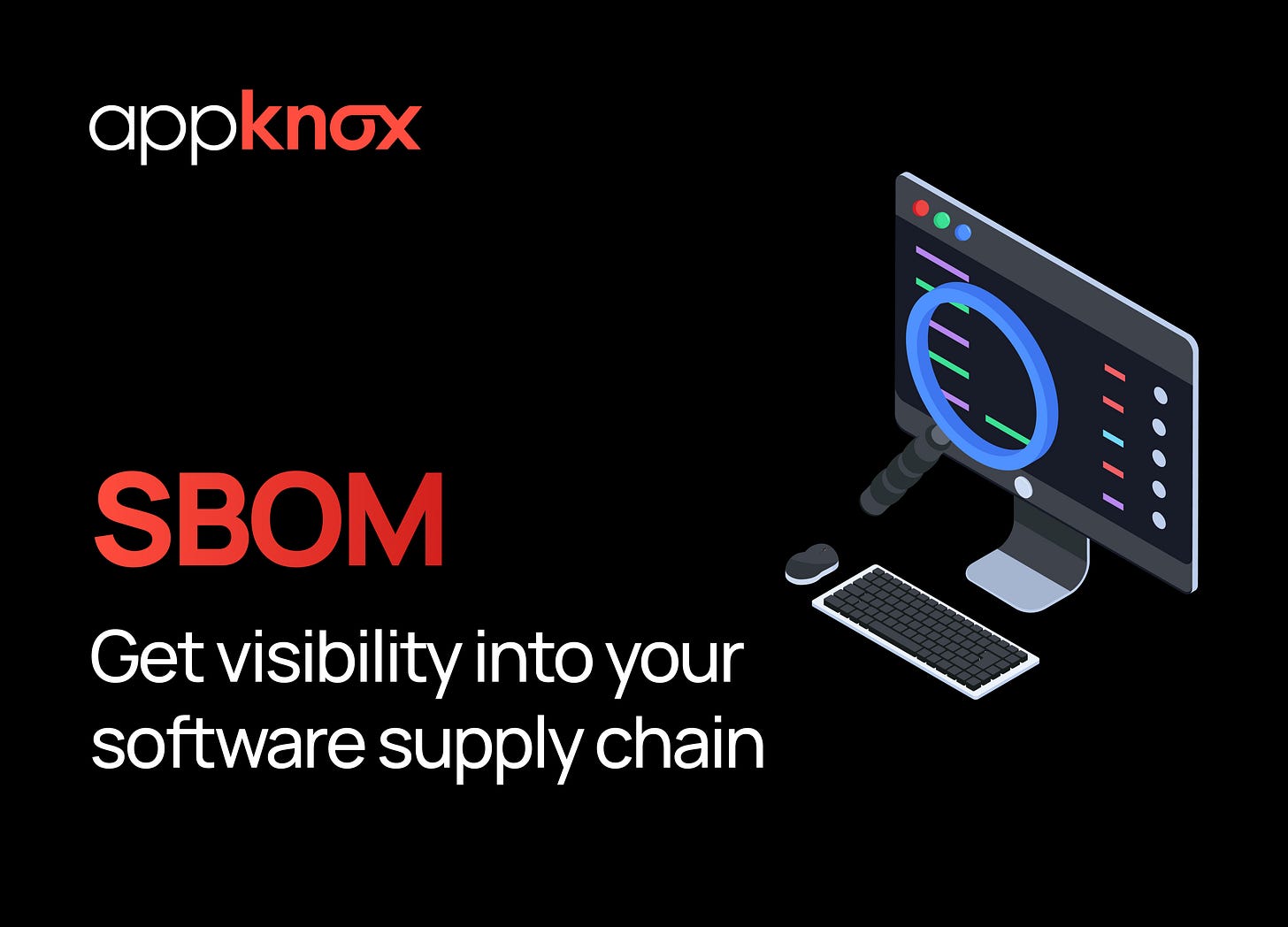Why modern enterprises need a comprehensive SBOM
Eliminate blind spots in your software supply chain
Complex Dependencies - The Domino Effect
How well do you know what is in your application’s code?
To keep up with the demands of today’s fast-paced software GTM, developers import ready-to-use software components - libraries, frameworks, APIs - from open source respositories or proprietary packages, into their application’s codebase.
‘Houston, we have a dependency problem!’
According to the latest OSSRA report by Black Duck, the typical modern software application depends on 911 open source components; That’s gone up by more than 82% in the last five years
As renowned security strategist Tim Mackey said, ‘Modern software applications have a dependency problem’. That’s your first domino.
Imported software components can create nested dependencies, or worse, transitive dependencies. A complex web of dependencies makes your software application fragile. Because every imported component (a) increases the opacity of your software composition, (b) makes it harder to monitor the security status of your software supply chain, and (c) increases your risk exposure. That’s your second domino.
And while importing-using 3rd-party software components is commonplace, developers/development teams rarely do a ‘background check’ on these components: And the findings of the OSSRA report validate this:
90% of the codebases scanned contained components that were out of date by four years!
64% of the OSS components had transitive dependencies
81% of the codebases scanned contained high-risk or critical-risk vulnerabilities
And that’s your third, wobbly domino.
Now here’s the kicker: Development teams at enterprises typically re-use the same software components across multiple applications in an app portfolio.
One or more of these could trigger a collapse at any time.
Without visibility into what components your software application uses, where they are declared, and what dependencies they have - you are sitting on a ticking security time bomb.
The solution? You need an SBOM.
What is an SBOM and Why You Need One
Picture this: You have just discovered a critical security vulnerability in your application. Your development team needs to build a security patch - but cannot identify the compromised component, how many instances of it exist in your application and where, and what other components depend on it aka the ‘blast radius’ of the vulnerable component.
When your development and security teams do not have an inventory of the third-party software components used to build an application, addressing security vulnerabilities becomes challenging.
Without an inventory, it can take much longer to identify the root cause of a vulnerability, isolate it, and remediate it. Meanwhile, the data of your customers and end users remains exposed to potential attacks.
And that’s why you need an SBOM.
An SBOM gives your developers and security teams a comprehensive, detailed inventory of all the components that have been used to build your software application, and the dependencies between them.
SBOMs give you a nested inventory as well i.e., you get visibility into what each component is built of.
With this visibility, your development and security teams can zero in on the root cause of a vulnerability, build and apply a security patch much faster, and minimise the damage from an exploit or a data breach.
Strengthen your software supply chain security with an SBOM
Software supply chain security is no longer optional.
In the aftermath of several high-profile security breaches like the Solarwinds incident, the US government passed EO 14028. This order mandates software vendors to package their software with an SBOM to ensure software supply chain transparency.
Now more than ever, security teams are expected to build efficient workflows to (1) detect and remediate security vulnerabilities in the shortest time possible and (2) minimize the impact of a security incident on a company’s reputation.
As a result, the SBOM has become an indispensable part of every enterprise’s security strategy.
Here’s how an SBOM can secure your software supply chain:
1. Get visibility across your supply chain
An SBOM helps you trace the upstream origins of each software component or library that you have used in your application.
This helps you avoid components with known security vulnerabilities, track version information, and identify potential licensing conflicts. So instead of playing ‘whack-a-mole’ or firefighting security threats, you can have an incident response plan in place ahead of time.
2. Get ‘last mile’ component visibility
Not knowing what components are making your application work can not only be a huge blind spot but also the recipe for the perfect security disaster.
An SBOM lists out every software component and nested components used in your application’s code base. When the security alarms start blaring, your development and security teams can check the component inventory to understand where the rogue component resides in your application and apply a security fix.
3. Improve your vulnerability assessment process
For a developer, fixing a known security vulnerability or responding effectively to a security incident assumes the highest precedence. After all, an organization’s reputation, its credibility, and sensitive data of users could be at stake.
By building and maintaining the inventory of components used in your application, the SBOM takes out the guesswork and helps isolate vulnerabilities to specific components. Instead of a trial-and-error approach, you can adopt a laser-focused approach to addressing security issues to minimise the fallout of a vulnerability.
4. Respond faster to security incidents
When responding to a security threat, time is of the essence. Without a clear picture of your application’s composition and a mapping of inter-component dependencies, your security response would be stuck at the drawing board.
An SBOM gives your developers and security team the clear picture they need to build and release a security update in the shortest time possible - accurate composition analysis and dependency mapping helps you identify which component is the root cause of a vulnerability and which additional components are affected due to dependencies.
5. Build trust with better transparency
An accurate, up-to-date SBOM provides transparency to internal teams and external stakeholders into the software components (open source or otherwise) that you have used to build your software application, and the exact nature of dependencies between them.
This kind of transparency helps build trust with customers, partners, and other stakeholders about the security posture of your application.
In Conclusion
It is safe bet to say that (a) the number of third-party components in a software will continue to rise, and (b) software applications will continue to grow in complexity, with each passing year.
For most organizations, it is outside the realm of practical possibility to manually test such a high number of software components. So for enterprise software applications, a growing dependency on third-party software components
(1) underscores the need for automated security testing, and
(2) necessitates the automation of software composition analysis (SCA) using an SBOM solution
How can Appknox help?
To secure your software and app development pipeline, you need to eliminate security vulnerabilities in your software supply chain. But to do so, you need to know:
Which components and libraries your application(s) are composed of,
What is the source of each component, (i.e. who is the vendor/developer, licensing information, version number, etc.)
Which parts of your application have dependencies on 3rd-party components,
Which components have known and reported vulnerabilities,
What is the severity of vulnerabilities, and how to prioritize their remediation
With the Appknox binary-based SBOM, you can tick all the boxes related to securing your application portfolio’s dependencies on software components.




